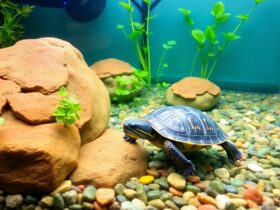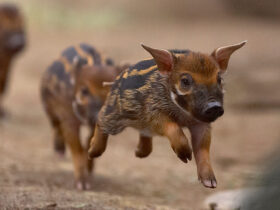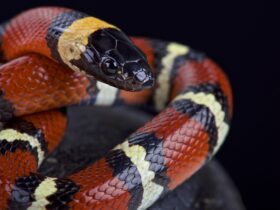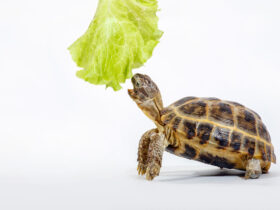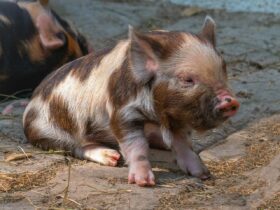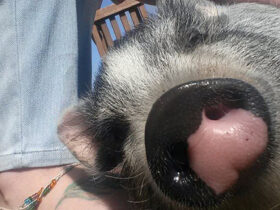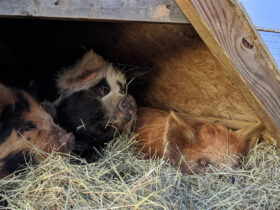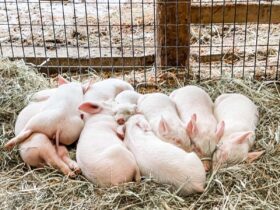So, you’re thinking about setting up a mini pig habitat? Whether you’re a new pig parent or just looking to upgrade your piggy’s digs, creating the right space is key. Mini pigs are super fun but they need the right environment to stay happy and healthy. Let’s dive into what makes the perfect mini pig habitat, from indoor setups to outdoor adventures.
Understanding Mini Pig Habitat Needs
Essential Space Requirements for Mini Pigs
When it comes to housing mini pigs, space is a big deal. These little guys might be small, but they need room to roam. A general rule of thumb is to provide at least 50 square feet per pig. This ensures they have enough area to move around, play, and explore. Think of it like this: a cramped pig is an unhappy pig. They need space not just for physical activity but also for mental stimulation.
- Minimum of 50 square feet per pig
- Space for exercise and play
- Room for mental stimulation
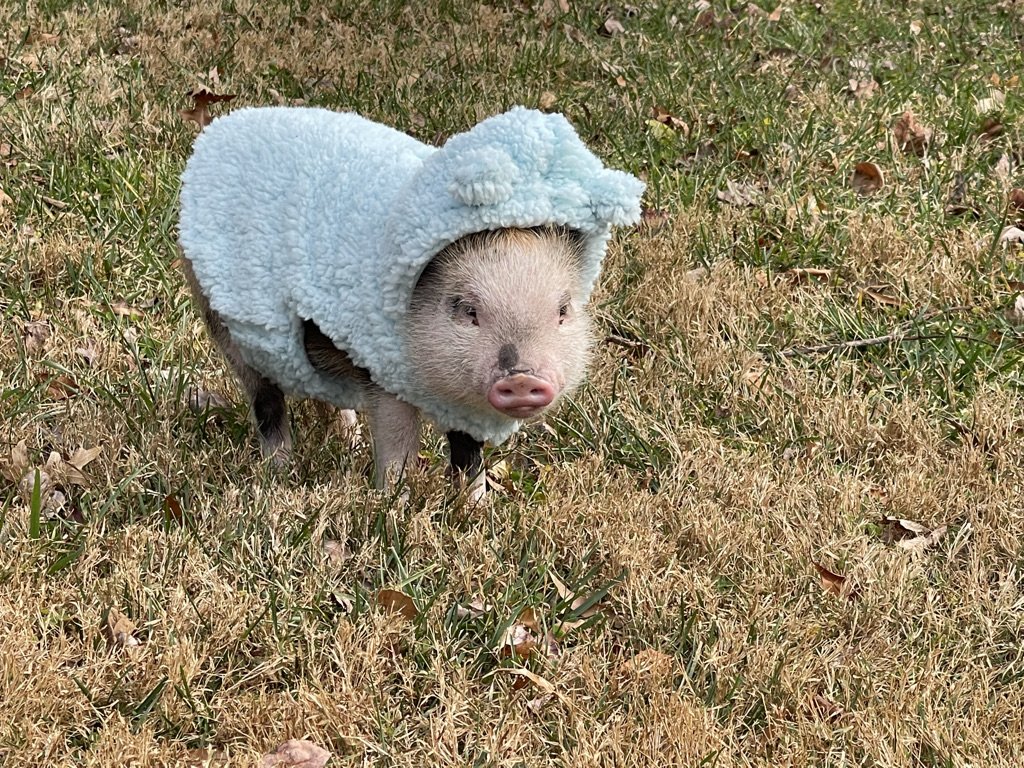
Indoor Versus Outdoor Living for Mini Pigs
Deciding between indoor and outdoor living for your mini pig can be a tough call. Indoors, you need to pig-proof your home. That means covering electrical cords and making sure there are no small items they can swallow. On the flip side, outdoor living requires secure fencing to keep them safe. Outdoor pigs need protection from the elements, like a shaded area in summer and a warm shelter in winter.
- Indoor: Pig-proofing essentials
- Outdoor: Secure fencing and weather protection
- Consider climate and local conditions
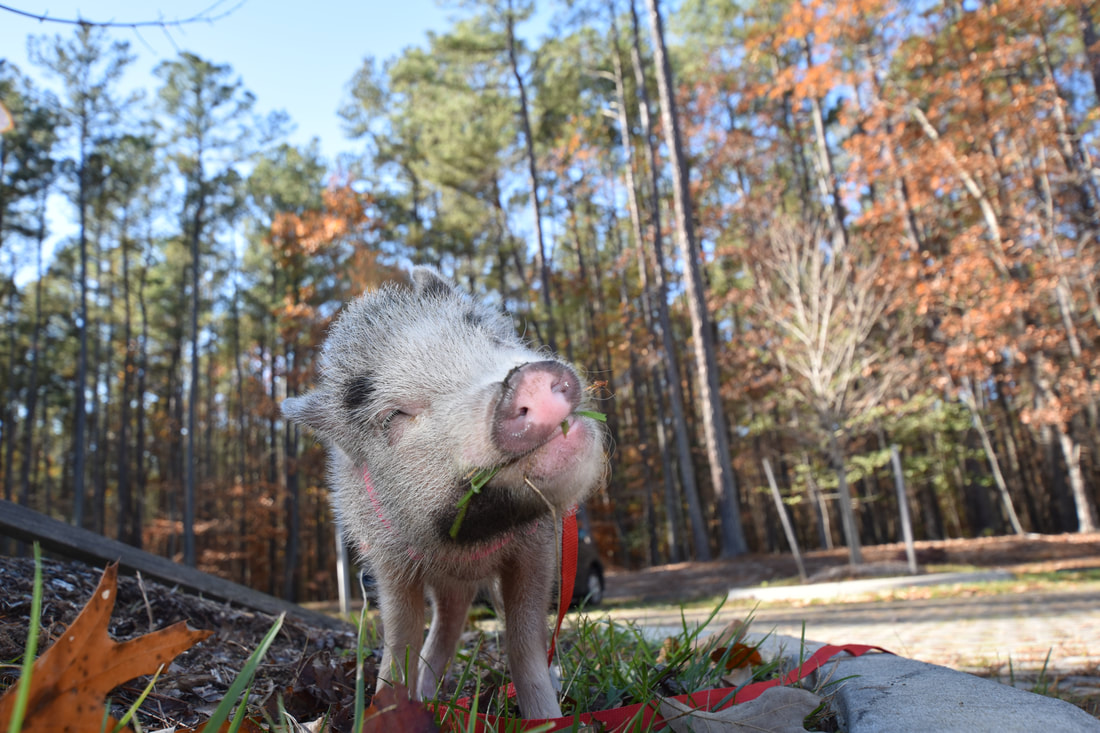
Creating a Safe Environment for Mini Pigs
Safety is key when setting up a habitat for mini pigs. Indoors, this means ensuring that household items are out of reach and that there are no sharp objects lying around. Outdoors, it’s all about the fencing. Pigs are smart and will find weak spots if they exist. Use sturdy materials, not chicken wire, for your fences. Also, always have fresh water available, and consider providing a mud wallow for them to cool off in during hot weather.
Mini pigs are curious creatures. They love to explore, root around, and find new things to investigate. Providing a safe environment helps them satisfy this curiosity without getting into trouble.
- Indoor safety: Remove hazards and secure loose items
- Outdoor safety: Strong fences and fresh water
- Provide enrichment to keep them engaged
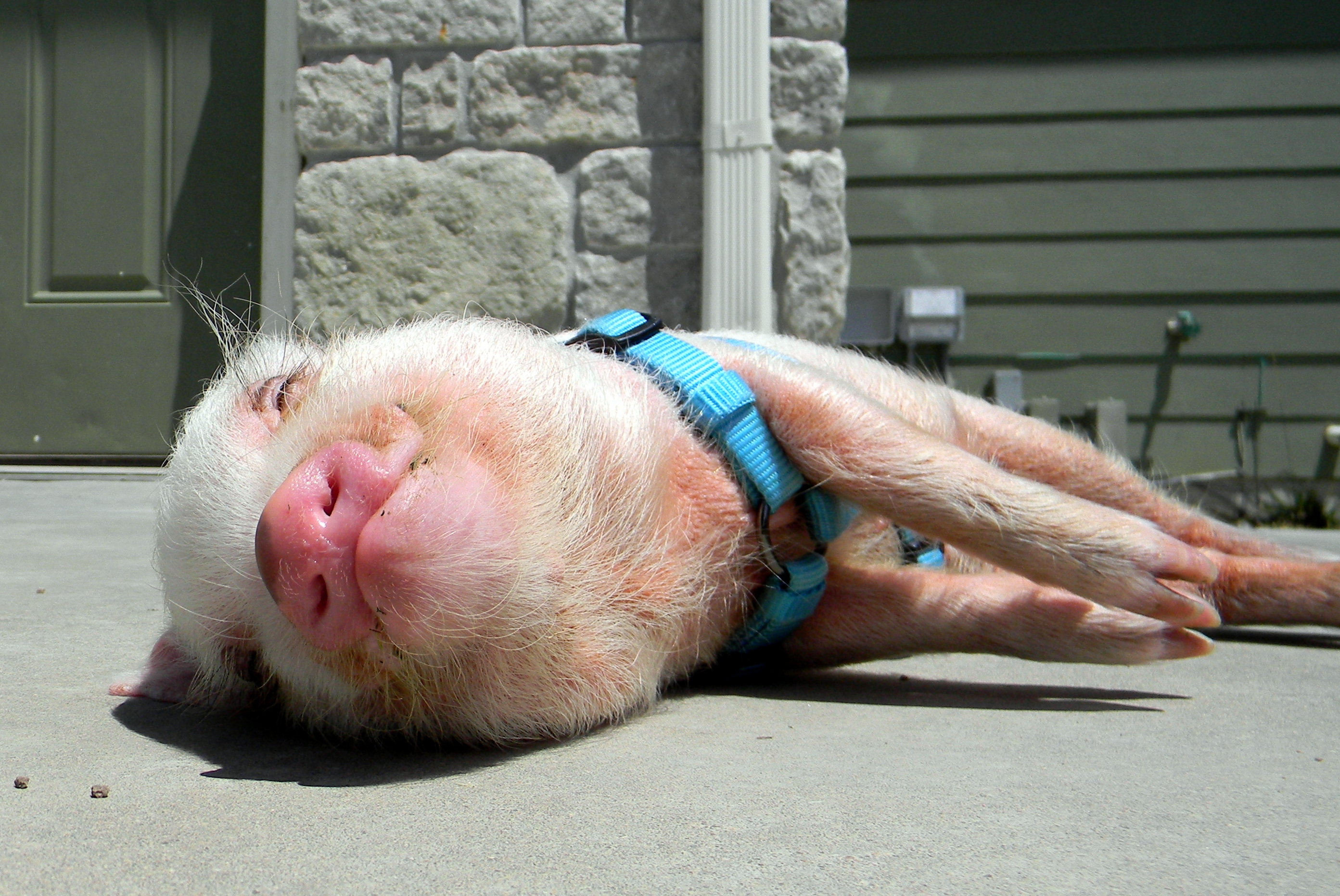
Designing the Perfect Indoor Mini Pig Space
Choosing the Right Flooring for Mini Pigs
When setting up a mini pig’s indoor space, picking the right flooring is crucial. Pigs have sensitive hooves, so you’ll want something comfortable and non-slippery. Consider using rubber mats or soft carpets. These materials are gentle on their feet and provide some grip, reducing the risk of injuries. Avoid hardwood or tile floors as they can be slippery and hard, making it uncomfortable for your pig to walk around.
Setting Up a Cozy Sleeping Area
Your mini pig needs a cozy spot to snuggle up and rest. Think about using a small pet bed or a pile of blankets in a quiet corner. Pigs love to burrow, so having a few layers of blankets can make them feel secure and comfortable. It’s important to keep this area clean and dry, ensuring your pig has a healthy place to sleep.
Indoor Enrichment Activities for Mini Pigs
Keeping your mini pig entertained indoors is vital for their mental health. Here are some fun activities you can try:
- Puzzle Feeders: These are great for stimulating your pig’s mind while they eat.
- Toys with Treats Inside: Keeps them busy and rewards them for playing.
- Training sessions: Mini pigs are smart and can learn tricks. Use positive reinforcement to teach them new skills.
A well-designed indoor space not only keeps your mini pig safe and comfortable but also enriches their lives, making them happier and healthier companions.
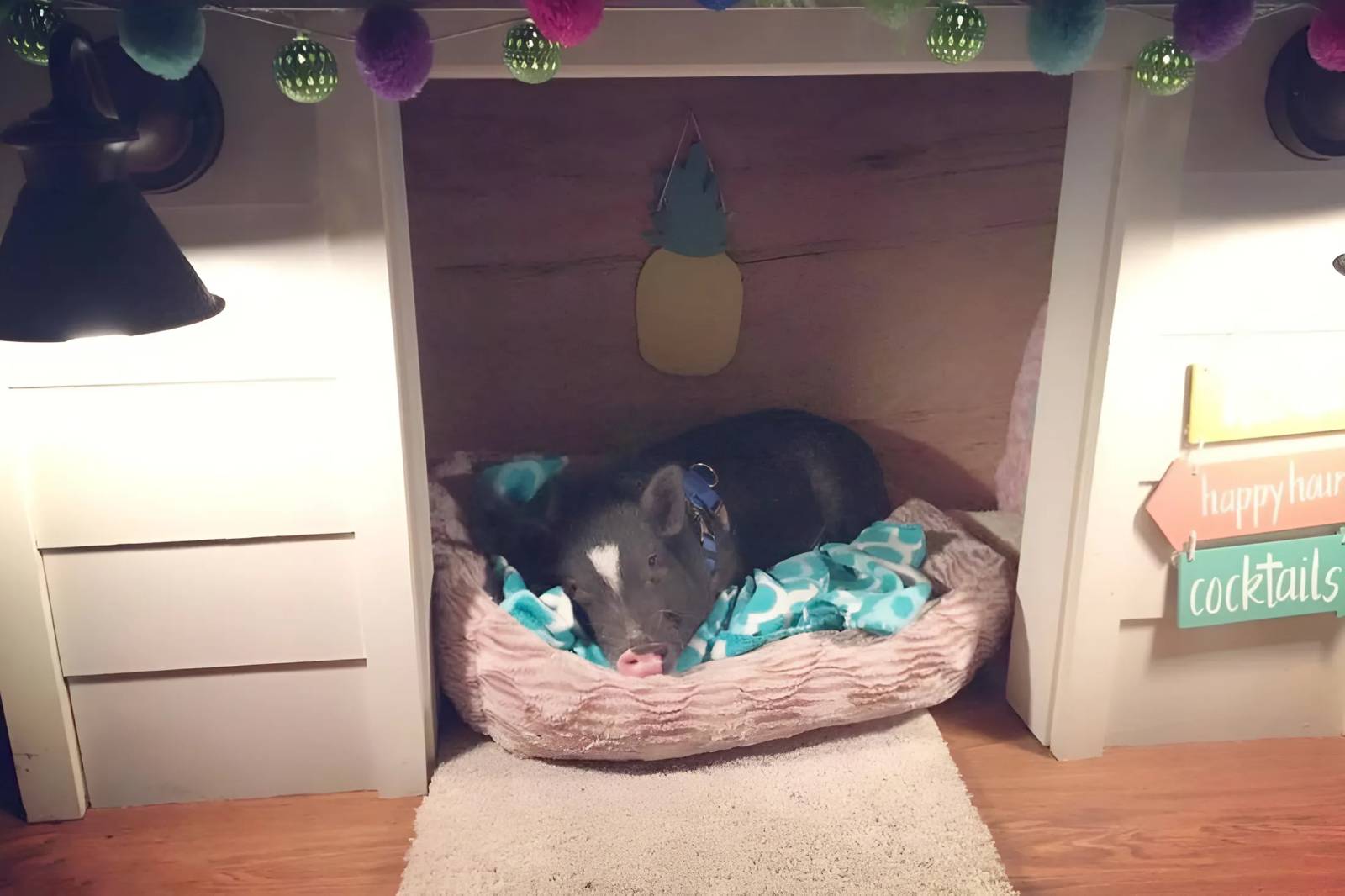
For more on training your mini pig, consider housebreaking through methods like litter box or outdoor training. This can be a rewarding experience for both you and your pig.
Outdoor Habitat Considerations for Mini Pigs
Fencing and Security for Outdoor Mini Pigs
When it comes to keeping your mini pigs safe outdoors, sturdy fencing is a must. Pigs are naturally curious and quite strong, so flimsy barriers just won’t cut it. Permanent fencing, not just chicken wire, is essential to prevent them from wandering off. It’s important to ensure that the fencing is tall enough and has no weak spots, as pigs will find a way out if they can. Consider using materials like wood or metal for durability.
- Use permanent fencing materials like wood or metal.
- Check regularly for weak spots or damage.
- Ensure the fence is high enough to prevent jumping.
Weather Considerations for Outdoor Mini Pigs
Mini pigs aren’t the best at handling extreme weather. They need a cozy, insulated shelter to retreat to when it’s cold, and a shady area for those hot summer days. During winter, straw or hay makes for excellent insulation, while a kiddie pool or mud wallow can help them cool off in the summer. Make sure they always have access to fresh water, especially during scorching weather.
In extreme weather, pigs need a place to escape the elements—whether it’s a warm spot in winter or a shady nook in the summer.
Outdoor Enrichment Ideas for Mini Pigs
Keeping your mini pig entertained outside is crucial for their happiness. They love to root and explore, so providing them with activities can prevent boredom and destructive behavior. Consider setting up a rooting box filled with safe materials like dirt or river rocks, and toss in some treats for them to find. A small kiddie pool can also serve as a fun play area.
- Create a rooting box with safe materials.
- Introduce toys and puzzles to stimulate their curiosity.
- Provide a kiddie pool for cooling off and play.
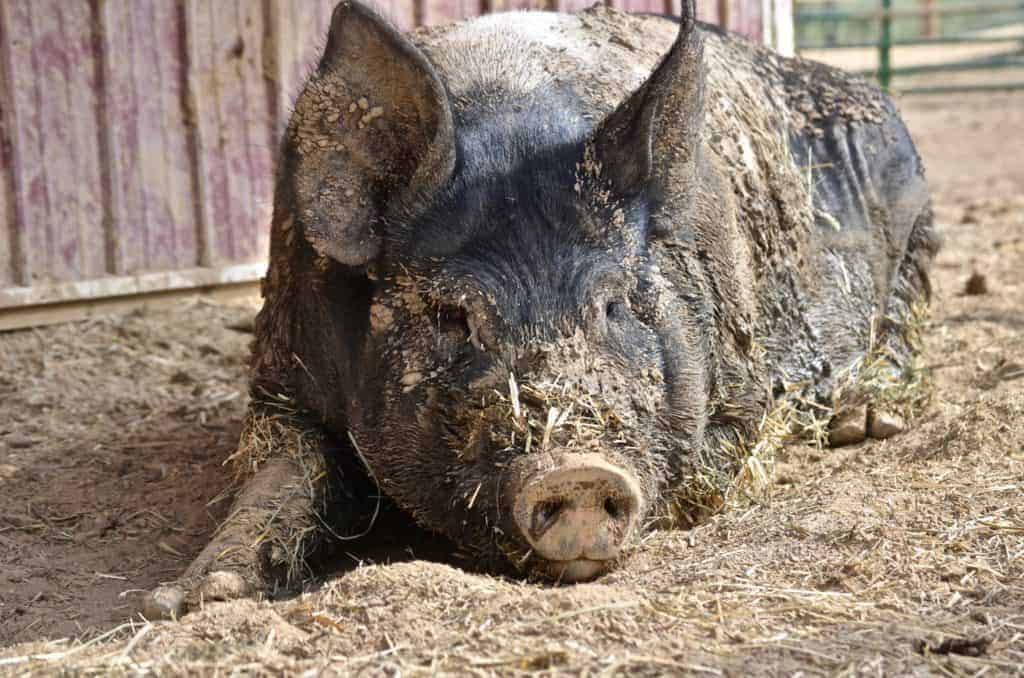
Feeding and Nutrition in a Mini Pig Habitat
Understanding Mini Pig Dietary Needs
Feeding your mini pig involves more than just tossing them some leftovers. They need a balanced diet tailored to their age and activity level. Young pigs, for instance, require more nutrients to support their growth, while adults and seniors should eat according to their weight and metabolism. Overfeeding can lead to obesity, a common issue in mini pigs. It’s crucial to provide nutritionally balanced pellets, fresh vegetables, and limited fruits. Avoid table scraps and toxic foods, and make sure they have plenty of fresh water.
Setting Up a Feeding Station
Creating a designated feeding area helps in maintaining a clean and organized habitat. Here’s how you can set up an ideal feeding station:
- Choose a Quiet Spot: Pick a calm area away from their sleeping zone.
- Use Heavy Bowls: Mini pigs can be quite enthusiastic eaters, so heavy bowls that don’t tip over easily are a must.
- Keep It Clean: Regularly wash the feeding bowls to prevent bacterial growth.
Common Feeding Mistakes to Avoid
Feeding mini pigs might seem straightforward, but there are common pitfalls:
- Feeding Too Much Fruit: While fruits are a good treat, they are high in sugar.
- Skipping Vet Consultations: Regular vet visits are important for personalized feeding advice.
- Ignoring Activity Levels: Adjust your pig’s diet based on their activity to maintain a healthy weight.
Remember, each mini pig is unique. Regular consultations with a vet can help tailor their diet to their specific needs. Mini pigs require a balanced diet that supports their overall health and wellbeing.
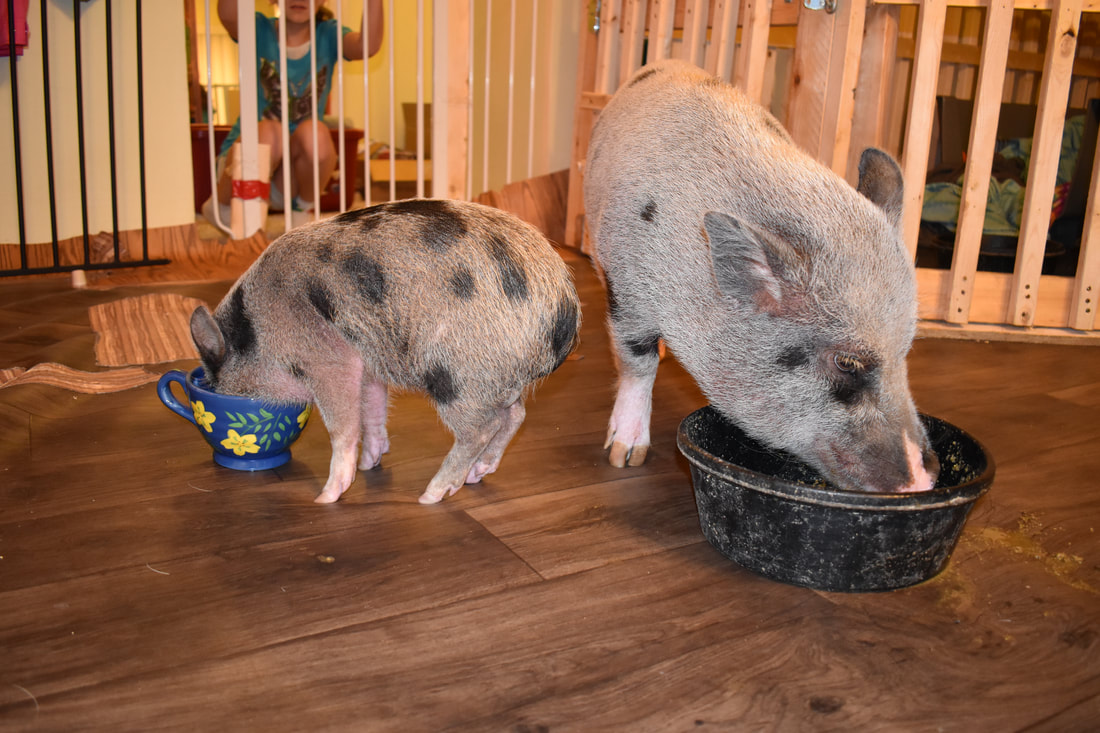
Social and Behavioral Aspects of Mini Pig Habitats
Socializing Mini Pigs with Other Animals
Mini pigs are social creatures, and they thrive on interaction, not just with humans but with other animals too. When introducing mini pigs to other pets, patience is key. Slow introductions can prevent stress and aggression. Always supervise the first few encounters, especially with dogs, as they might see pigs as prey. Keep an eye on body language; a wagging tail or relaxed ears are good signs. Over time, mini pigs can form strong bonds with other animals, but it’s crucial to ensure everyone feels safe and secure.
Understanding Mini Pig Behavior
Understanding your mini pig’s behavior is like learning a new language. Pigs communicate through various sounds and body gestures. They might grunt softly when content or squeal loudly if frightened. Rooting is a natural behavior, and providing a rooting box can help satisfy this need. Mini pigs are intelligent and curious, often testing boundaries. Consistent training using positive reinforcement can channel their energy positively. Remember, a well-understood pig is a happy pig.
Addressing Behavioral Issues in Mini Pigs
Behavioral challenges in mini pigs can arise if they feel bored or neglected. Common issues include food aggression and destructive behavior. To tackle these, establish a routine and provide plenty of enrichment activities like puzzle feeders or interactive toys. If a pig becomes aggressive, it might be asserting dominance. Techniques like “Move the Pig,” where you gently guide them to another spot, can reinforce your role as the leader. Consistency and patience are essential in addressing these issues and ensuring a harmonious living environment.
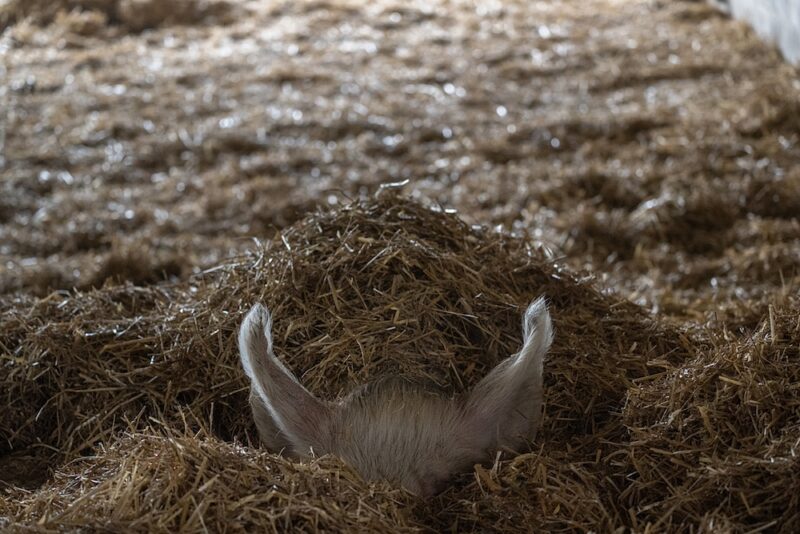
Legal and Zoning Considerations for Mini Pig Owners
Understanding Local Zoning Laws for Mini Pigs
Before you even think about bringing a mini pig into your home, it’s super important to check if your area allows them. Pigs are often classified as livestock or exotic animals, which might mean they aren’t permitted in residential zones. Don’t skip this step—it’s the difference between a happy home and heartbreak if your pig gets taken away. Call your local city office to confirm the zoning laws, and make sure to get everything in writing. Trust me, you don’t want any surprises later.
How to Advocate for Mini Pig Ownership
If your area doesn’t allow mini pigs, don’t lose hope. There are ways to advocate for change. Start by gathering support from neighbors and other pet owners. You can even attend city council meetings to present your case. Sometimes, a petition can make a big difference. The key is to show that these pigs are not just farm animals but beloved pets.
Navigating Legal Challenges with Mini Pigs
Legal challenges can pop up even if your zoning laws are favorable. Complaints from neighbors about noise or smell can lead to issues. Keep a record of all communications with local authorities, and be proactive in addressing any concerns. It’s also smart to consult a lawyer who knows about local pet laws, just in case you need some legal backup. Remember, being prepared can save you a lot of stress down the line.
Owning a mini pig can be a rewarding experience, but it comes with its own set of challenges. Being informed and prepared can make all the difference in ensuring a harmonious living situation for you and your pig.
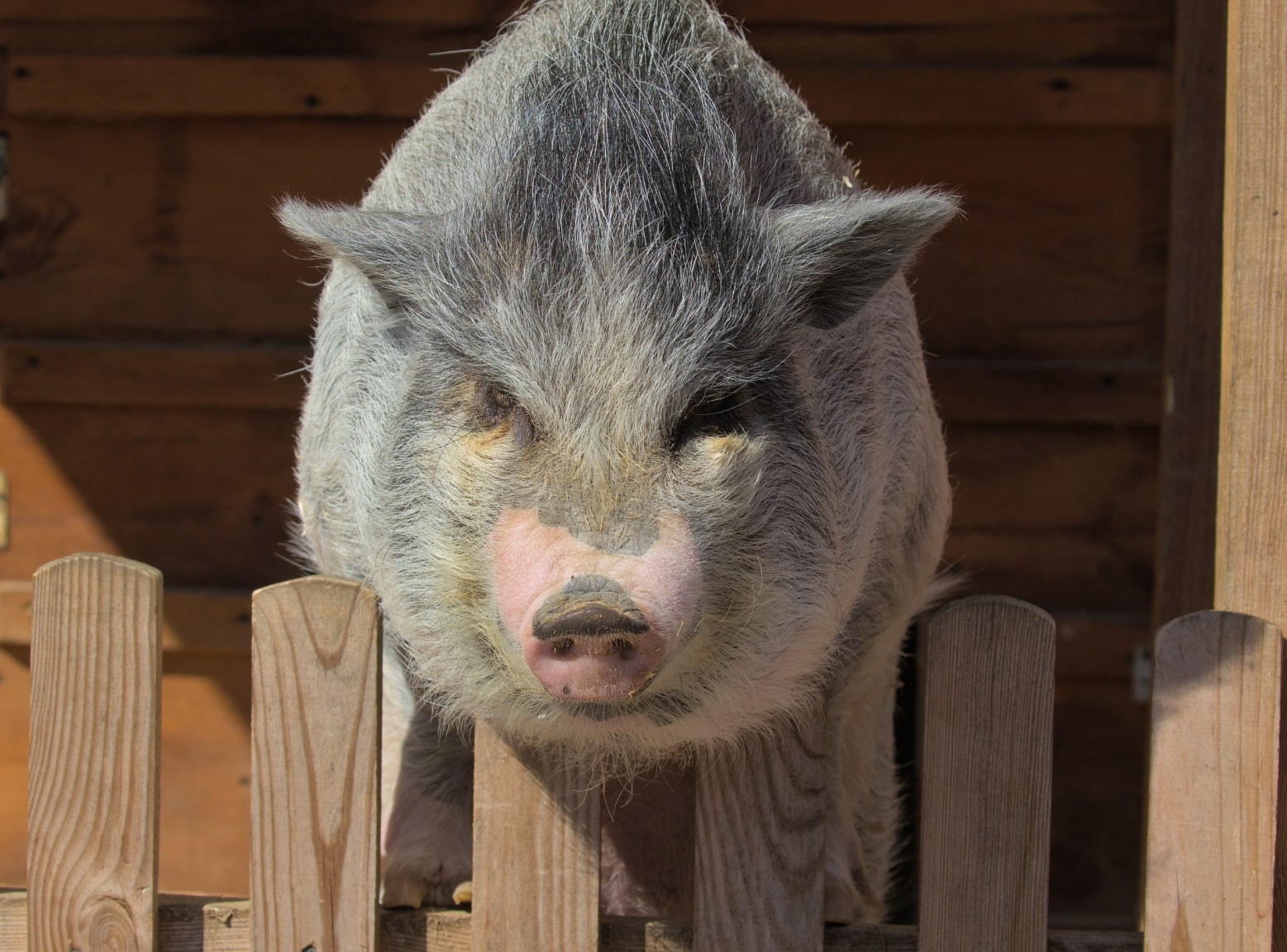
Health and Safety in Mini Pig Habitats
Common Health Concerns for Mini Pigs
Mini pigs, like any other pets, can face a variety of health issues. Some frequent concerns include obesity, skin conditions, and respiratory problems. Regular check-ups with a veterinarian are crucial to catch any health problems early. Obesity is a common issue due to their love for food, so maintaining a balanced diet is essential. Skin conditions can arise from allergies or parasites, requiring diligent care and sometimes medication. Respiratory issues may occur in environments with poor ventilation or excessive dust.
Safety Tips for Mini Pig Owners
To ensure your mini pig’s safety, it’s important to pig-proof your home. Here are some tips:
- Secure hazardous areas: Make sure to block off access to places like the kitchen or garage where your pig might encounter harmful substances.
- Check for toxic plants: Remove any plants that might be toxic to pigs from your home and yard.
- Use proper fencing: If you have an outdoor area, ensure the fencing is sturdy and escape-proof.
Emergency Preparedness for Mini Pig Habitats
Preparing for emergencies is a must for any pet owner. Here’s a quick checklist:
- First Aid Kit: Keep a kit handy with essentials like bandages, antiseptic wipes, and tweezers.
- Emergency Contacts: Have your vet’s contact information easily accessible.
- Evacuation Plan: Know how you’ll transport your mini pig quickly in case of an emergency.
It’s always better to be prepared for the unexpected, ensuring your mini pig’s health and safety are never compromised.
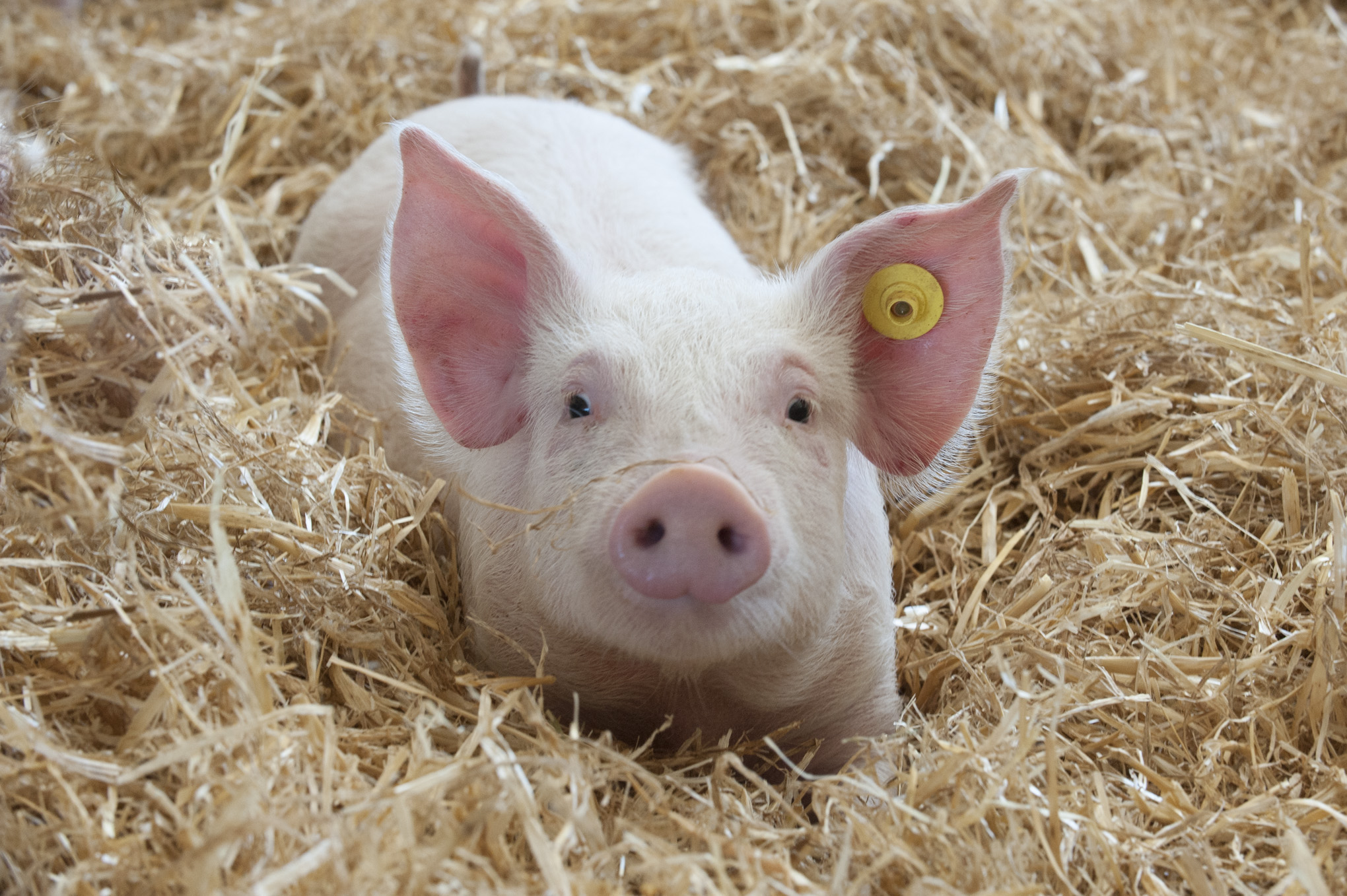
Conclusion
So, there you have it, folks! Creating the perfect habitat for your mini pig isn’t just about having the right space; it’s about understanding their needs and making them feel at home. Whether you’re setting up a cozy indoor area or designing an outdoor playground, remember that your pig’s happiness is the goal. Sure, it might take some trial and error, and maybe a few chewed-up shoes, but seeing your pig content and thriving is worth every bit of effort. Keep learning, stay patient, and enjoy the quirky, lovable company of your mini pig. They’re not just pets; they’re family.
Frequently Asked Questions
How much space does a mini pig need to live comfortably?
Mini pigs need enough space to move around freely. Indoor pigs should have a dedicated area, while outdoor pigs need a secure yard.
Can mini pigs live indoors all the time?
Yes, mini pigs can live indoors, but they need regular outdoor time for exercise and mental stimulation.
What should I feed my mini pig?
Mini pigs need a balanced diet of pig pellets, fresh vegetables, and occasional fruits. Avoid feeding them dog or cat food.
Are mini pigs good with other pets like dogs?
Mini pigs can get along with dogs, but it’s important to supervise their interactions as pigs are prey animals and dogs are predators.
Do mini pigs need vaccinations?
Yes, mini pigs need vaccinations to protect them from diseases. Consult a vet for a proper vaccination schedule.
How do I potty train my mini pig?
Potty training a mini pig involves consistency and patience. Use a designated area with a litter box and reward them for using it.
